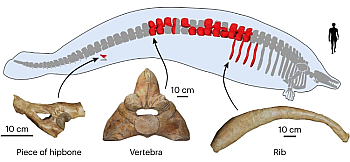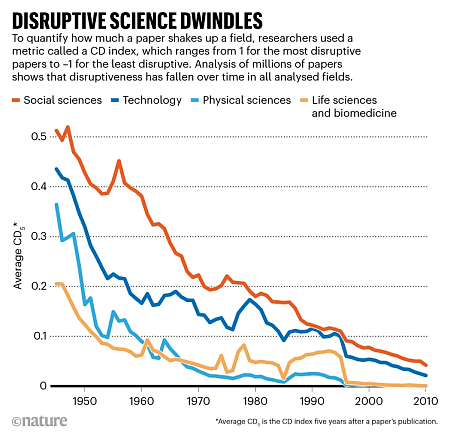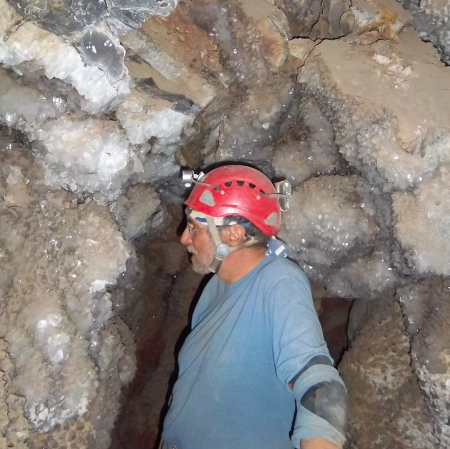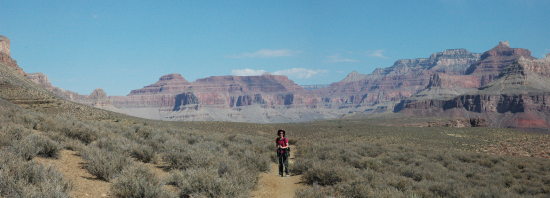Tag: nature
Ferris Akel – Napping Raccoon
An evening pause: This is how many of us all feel at the end of a hard week. Music is the “Daydream” by the Lovin’ Spoonful.
Hat tip Ferris Akel, who filmed this on September 21, 2024.
Gophers dropped near Mt St. Helens for one day cause a gigantic bloom of plant life 40 years later
In 1982, two years after the Mt. St. Helens volcanic eruption, scientists decided to do an experiment: They dropped six gophers into one meter square enclosures near the eruption with the hope the animals’ digging for one day would bring good soil close enough to the surface to encourage the return of plant life.
The results forty-plus years later:
Six years after their trip, there were over 40,000 plants thriving where the gophers had gotten to work, while the surrounding land remained, for the most part, barren. Studying the area over 40 years later, the team found they had left one hell of a legacy. “Plots with historic gopher activity harbored more diverse bacterial and fungal communities than the surrounding old-growth forests,” the team explained. “We also found more diverse fungal communities in these long-term lupine gopher plots than in forests that were historically clearcut, prior to the 1980 eruption, nearby at Bear Meadow.”
“In the 1980s, we were just testing the short-term reaction,” Allen added. “Who would have predicted you could toss a gopher in for a day and see a residual effect 40 years later?”
You can read the published paper here. It appears the gophers’ action activated the microbiological life in the soil, which in turn made it easier for plant life to return.
The potential benefits of this research is gigantic, especially in areas that have been devastated by any number of natural and man made disasters.
In 1982, two years after the Mt. St. Helens volcanic eruption, scientists decided to do an experiment: They dropped six gophers into one meter square enclosures near the eruption with the hope the animals’ digging for one day would bring good soil close enough to the surface to encourage the return of plant life.
The results forty-plus years later:
Six years after their trip, there were over 40,000 plants thriving where the gophers had gotten to work, while the surrounding land remained, for the most part, barren. Studying the area over 40 years later, the team found they had left one hell of a legacy. “Plots with historic gopher activity harbored more diverse bacterial and fungal communities than the surrounding old-growth forests,” the team explained. “We also found more diverse fungal communities in these long-term lupine gopher plots than in forests that were historically clearcut, prior to the 1980 eruption, nearby at Bear Meadow.”
“In the 1980s, we were just testing the short-term reaction,” Allen added. “Who would have predicted you could toss a gopher in for a day and see a residual effect 40 years later?”
You can read the published paper here. It appears the gophers’ action activated the microbiological life in the soil, which in turn made it easier for plant life to return.
The potential benefits of this research is gigantic, especially in areas that have been devastated by any number of natural and man made disasters.
Naomi SV – The Sounds of Silence
An evening pause: Short but sweet. As she notes, the performance “turns into a Disney movie.”
Hat tip James Street.
Ferris Akel – Great Blue Heron
An evening pause: The music is called “Surprise Attack” by James Horner, and was written for the 1982 film, Star Trek: The Wrath of Khan. The action is produced by a Great Blue Heron at Sapsucker Woods, Ithaca, New York on July 20, 2024.
May your weekend activities be as successful.
Hat tip Ferris Akel.
More garbage science about wildfires and global warming from Nature

The science journal which no longer
understands how real science is done
The once highly respected science journal Nature continues its descent into propaganda and bad science, all because it bows unskeptically before the altar of global warming and leftist science fantasies.
Today’s example is an article this week entitled “You’re not imagining it: extreme wildfires are now more common,” describing a new Nature paper that attempted to use satellite data to prove that the intensity of wildfires has increased in the past two decades.
For the current study, published in Nature Ecology and Evolution on 24 June, Cunningham and his colleagues scoured global satellite data for fire activity. They used infrared records to measure the energy intensity of nearly 31 million daily fire events over two decades, focusing on the most extreme ones — roughly 2,900 events. The researchers calculated that there was a 2.2-fold increase in the frequency of extreme events globally in 2003–23, and a 2.3-fold boost in the average intensity of the top 20 most intense fires each year.
We’re all gonna die! As is usual for these crap climate-related studies, the entire goal is to drum up some manufactured new crisis that justifies the claim that the climate is warming. This study is no different, as the article eagerly notes:
Although the study doesn’t directly connect the fire trend to global warming, Cunningham [the study’s lead author] says “there’s almost certainly a significant signal of climate change”. Research has shown that rising temperatures are drying out ecosystems — such as coniferous forests — that are naturally prone to fire. This provides fuel that can boost the fires’ size and longevity. The latest study also found that the energy intensity of the fires increased faster during the night-time over the past two decades than during the daytime, which aligns with evidence4 that rising night-time temperatures are contributing to fire risk.
Not surprisingly, the New York Times immediately jumped on the bandwagon with its own article that accepts the conclusions of this research with utter naivety.
What junk. First, Cunningham fails to note this minor fact mentioned in the abstract of his own paper:
» Read more
Galapagos Islands – Blue footed Boobies dancing
An evening pause: Short but sweet, and somehow I think is perfect to begin summer.
Hat tip Judd Clark.
Ferris Akel – Snow Geese Takeoff, March 20, 2021
An evening pause: Wait for it — a moment that tells us even on Earth there is alien things going on all around us. Makes for a good start to the weekend.
Hat tip Ferris.
Alpha Divers – Kin Ha cavern in Mexico
An evening pause: To start our weekend let’s go cavern diving in Kin Ha Cavern in Mexico, also called a cenote. This is not exploration, but a commercial cave for divers, following a preset life line.
Hat tip Judd Clark.
Alpha Divers – Kin Ha cavern in Mexico
Bones of the biggest ever whale species possibly found?

The uncertainty of science: Paleontologists have discovered a portion of the skeleton of what they claim might be the biggest and heaviest animal ever found, a whale that potentially grew to be as much as twice as big as a blue whale, the largest living species previously known.
A newly described fossilized whale named Perucetus colossus, dating to roughly 38 million years ago, might have been heavier than a blue whale, even if it was not as long. Blue whales, which are endangered, weigh about 100 to 150 tonnes, although some might be as heavy as 200 tonnes. Perucetus colossus was between 85 and 340 tonnes, according to the scientists who found and described the remains: 13 vertebrae, 4 ribs and a bit of pelvis. Their best-guess estimate is that the whale was around 180 tonnes. This mind-boggling mass is the result of its bones, which were big and dense — an evolutionary adaptation that helped it to dive.
The graphic to the right shows the discovered bones in red, with the rest of the theorized skeleton indicated in grey. Only in the article’s next-to-last paragraph does Nature recognize this very very very large uncertainty:
The team chose to create a visual reconstruction of what the whale might have looked like, basing the head on skulls of related basilosaurid species, but they caution that some of the details are speculative. It could have been skinnier. But it also could have been quite a bit longer or fatter, [co-author Eli] Amson says.
In other words, they presently have no idea what the species actually looked like, or how big it actually was. It very well could have been much shorter and thinner than proposed. It appears therefore they chose to highlight the largest possible size to garner the biggest press coverage — which of course they are getting.

The uncertainty of science: Paleontologists have discovered a portion of the skeleton of what they claim might be the biggest and heaviest animal ever found, a whale that potentially grew to be as much as twice as big as a blue whale, the largest living species previously known.
A newly described fossilized whale named Perucetus colossus, dating to roughly 38 million years ago, might have been heavier than a blue whale, even if it was not as long. Blue whales, which are endangered, weigh about 100 to 150 tonnes, although some might be as heavy as 200 tonnes. Perucetus colossus was between 85 and 340 tonnes, according to the scientists who found and described the remains: 13 vertebrae, 4 ribs and a bit of pelvis. Their best-guess estimate is that the whale was around 180 tonnes. This mind-boggling mass is the result of its bones, which were big and dense — an evolutionary adaptation that helped it to dive.
The graphic to the right shows the discovered bones in red, with the rest of the theorized skeleton indicated in grey. Only in the article’s next-to-last paragraph does Nature recognize this very very very large uncertainty:
The team chose to create a visual reconstruction of what the whale might have looked like, basing the head on skulls of related basilosaurid species, but they caution that some of the details are speculative. It could have been skinnier. But it also could have been quite a bit longer or fatter, [co-author Eli] Amson says.
In other words, they presently have no idea what the species actually looked like, or how big it actually was. It very well could have been much shorter and thinner than proposed. It appears therefore they chose to highlight the largest possible size to garner the biggest press coverage — which of course they are getting.
Zorro – One In a Million Moments From Nature
Exploring Arizona’s Abandoned Highway 60 and the Claypool Tunnel
An evening pause: Better late than never. I forgot to schedule some pauses. This one is fascinating because of the history of technology it reveals.
Hat tip Diane Zimmerman.
Steady decline for decades in the publication of “disruptive science”

Though their definition of what makes a science paper disruptive is open to debate, a review of millions of peer-reviewed papers published since the end of World War II has shown a steady decline in such papers, as if scientists are increasingly unwilling or unable to think outside the box.
The graph to the right comes from this research.
The authors reasoned that if a study was highly disruptive, subsequent research would be less likely to cite the study’s references, and instead cite the study itself. Using the citation data from 45 million manuscripts and 3.9 million patents, the researchers calculated a measure of disruptiveness, called the ‘CD index’, in which values ranged from –1 for the least disruptive work to 1 for the most disruptive.
The average CD index declined by more than 90% between 1945 and 2010 for research manuscripts, and by more than 78% from 1980 to 2010 for patents. Disruptiveness declined in all of the analysed research fields and patent types, even when factoring in potential differences in factors such as citation practices.
The authors also analysed the most common verbs used in manuscripts and found that whereas research in the 1950s was more likely to use words evoking creation or discovery such as ‘produce’ or ‘determine’, that done in the 2010s was more likely to refer to incremental progress, using terms such as ‘improve’ or ‘enhance’.
The article that I link to above is from Nature, so of course it can’t see the elephant in the room, citing as a possible explanation “changes in the scientific enterprise” where most scientists today work as teams rather than alone.
I say, when you increasingly have big government money involved in research, following World War II, it becomes more and more difficult to buck the popular trends. Tie that to the growing blacklist culture that now destroys the career of any scientist who dares to say something even slightly different, and no one should be surprised originality is declining in scientific research. The culture will no longer tolerate it. You will tow the line, or you will be gone. Scientists are thus towing the line.
To my readers: I had intended to include this paper as part of a larger essay about the general blacklist culture that now dominates American society, but my continuing health issues make it difficult to sit at my desk for long periods. I hope to have things under control in the next few days, but until then my posting is going to continue to be limited.

Though their definition of what makes a science paper disruptive is open to debate, a review of millions of peer-reviewed papers published since the end of World War II has shown a steady decline in such papers, as if scientists are increasingly unwilling or unable to think outside the box.
The graph to the right comes from this research.
The authors reasoned that if a study was highly disruptive, subsequent research would be less likely to cite the study’s references, and instead cite the study itself. Using the citation data from 45 million manuscripts and 3.9 million patents, the researchers calculated a measure of disruptiveness, called the ‘CD index’, in which values ranged from –1 for the least disruptive work to 1 for the most disruptive.
The average CD index declined by more than 90% between 1945 and 2010 for research manuscripts, and by more than 78% from 1980 to 2010 for patents. Disruptiveness declined in all of the analysed research fields and patent types, even when factoring in potential differences in factors such as citation practices.
The authors also analysed the most common verbs used in manuscripts and found that whereas research in the 1950s was more likely to use words evoking creation or discovery such as ‘produce’ or ‘determine’, that done in the 2010s was more likely to refer to incremental progress, using terms such as ‘improve’ or ‘enhance’.
The article that I link to above is from Nature, so of course it can’t see the elephant in the room, citing as a possible explanation “changes in the scientific enterprise” where most scientists today work as teams rather than alone.
I say, when you increasingly have big government money involved in research, following World War II, it becomes more and more difficult to buck the popular trends. Tie that to the growing blacklist culture that now destroys the career of any scientist who dares to say something even slightly different, and no one should be surprised originality is declining in scientific research. The culture will no longer tolerate it. You will tow the line, or you will be gone. Scientists are thus towing the line.
To my readers: I had intended to include this paper as part of a larger essay about the general blacklist culture that now dominates American society, but my continuing health issues make it difficult to sit at my desk for long periods. I hope to have things under control in the next few days, but until then my posting is going to continue to be limited.
Swimming with orcas
An evening pause: A nice way to start the weekend. As noted by the orca expert, “They’re really just big dolphins with a fancy paint job.”
Hat tip Cotour.
National Geographic – Alien Body Invader
Patrick Dykstra – Chasing Ocean Giants
An evening pause: Hat tip Cotour, who correctly describes this as “a meeting of aliens from two different worlds.”
A Icelandic volcanic eruption, for the people
BBC Earth – Swarms of ten million starlings in Rome
Ethiopia’s Chapel in the Sky
BBC Earth – Hamsters!
Where I was this past weekend

Several readers have asked in the comments for a report on what I did this past weekend.
I went caving. The photo to the right, taken on a previous trip several years ago, will give you an idea. The cave is amazingly beautiful. The trip was to designed to give a bunch of people a chance to see it.
I won’t say much more than this, mostly because it is unwise to reveal too much about the caves one visits because this then attracts people to them who are often either inexperienced (and thus a risk to themselves) or untrustworthy in terms of protecting the cave’s beauty. I am totally willing and open to bring anyone who wants to go to the caves I visit, but a newbie should go the first time with someone experienced, for the reasons already outlined.

Several readers have asked in the comments for a report on what I did this past weekend.
I went caving. The photo to the right, taken on a previous trip several years ago, will give you an idea. The cave is amazingly beautiful. The trip was to designed to give a bunch of people a chance to see it.
I won’t say much more than this, mostly because it is unwise to reveal too much about the caves one visits because this then attracts people to them who are often either inexperienced (and thus a risk to themselves) or untrustworthy in terms of protecting the cave’s beauty. I am totally willing and open to bring anyone who wants to go to the caves I visit, but a newbie should go the first time with someone experienced, for the reasons already outlined.
Squirrel vs Physicist
An evening pause: This battle between an inventive physicist and an even more determined squirrel does raise the question, who really is smarter?
Hat tip Tom Biggar.
Tor Andre Børresen – Norway by drone
An evening pause: If you don’t like the cold, or have a fear of heights, then this video is your best way for seeing the natural wonders of Norway.
Hat tip Phill Oltmann.
Lyrebird sings Australia
Jean Sibelius – Finlandia
An evening pause: Takes us also on a magnificent tour of Finland’s natural world, with some breath-taking film footage.
Hat tip Björn Larsson.
John Downer Productions – Half a billion monarch butterflies
Louie Schwartzberg – The beauty of pollination
Marcel Remy – 94 years old and back on the summit
An evening pause: I like his words near the end: “Anytime something can happen to you. Sometimes you just put this thought aside and have fun.”
Hat tip Phill Oltmann.
Midnight repost: Doing the Grand Canyon right
My Behind the Black tenth anniversary retrospective continues: Tonight’s repost is an essay I wrote on July 15, 2013 shortly after one of Diane and I’s annual hiking trips to the bottom of the Grand Canyon.
——————————
Doing the Grand Canyon right

The one thing about the Grand Canyon that attracts hikers is its intimidating nature. People feel challenged by its large size and depth, and want to prove to themselves that they can do it.
The irony of this to me is that it is that intimidating nature that generally causes most people the most problems. People worry about the climb out. They worry about the heat. They worry about the lack of water. And they worry about vastness around them.
All of these things — the climb, the heat, the lack of water, and the vastness — must be dealt with. Each has caused the death of many visitors. Each could kill you if you are not prepared. In fact, one or all of these factors are probably the primary causes behind all of the approximately 300 rescues that occur each year at the Grand Canyon.
Yet, none of these factors is actually the biggest obstacle for most people trying to climb in and out of the Canyon. Instead, it is the worry about these things that causes people the most difficulties.
» Read more
STØDIG: Exploring the Arctic on a Repurposed Lifeboat
An evening pause: From the youtube webpage:
Two architects re-purposed a 100 person marine survival lifeboat; Stødig, into a self sufficient expedition home to travel 3500km from the UK to the Norwegian Arctic in 2019.
Hat tip Cotour.
